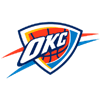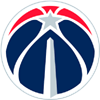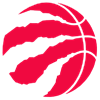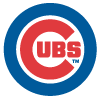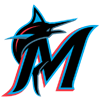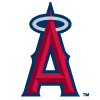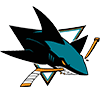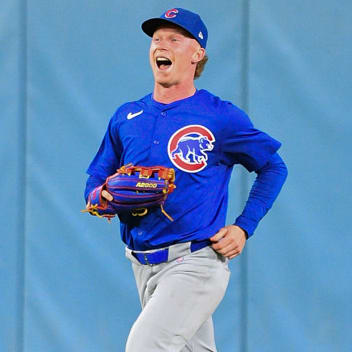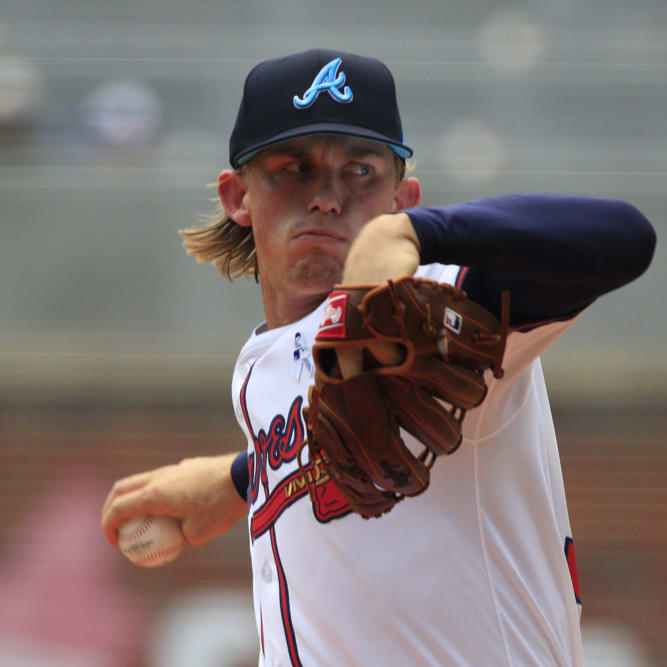Last time out I offered up some AL players who could come cheap this season and be useful keepers in 2022, and I'll do the same for the NL below. First though, I want to do a quick review of the recent Staff Keeper League auct... err, salary-cap draft, and give some pointers on how to navigate a league with extremely high inflation.
I've used the SKL as an example before, but here's a quick recap of the rules that create an inflationary environment. It's 18 teams mixed, with $260 budgets at the table (less the occasional penalty if someone wants to buy out a long-term contract on an unproductive player) and then 17 spots for minors (10) and reserves (seven) doled out in a draft after all active rosters are full. Big-leaguers have the standard 'two years at starting salary, then a third option year or sign them to a long-term deal at an extra $5 per year' structure for their contracts. The inflation comes from how we handle those minors and reserve rosters. Anyone drafted as a minor leaguer has a $0 contract that becomes a $3A (the equivalent of being picked up for $3 in the big-league portion of the evening) the season after they lose their rookie status. For instance, I currently have Jesus Luzardo as a prospect. Our rookie threshold is 20 MLB games, which he hasn't reached yet, so I could still keep him as one of my minor-league keepers for 2021. Even if
Last time out I offered up some AL players who could come cheap this season and be useful keepers in 2022, and I'll do the same for the NL below. First though, I want to do a quick review of the recent Staff Keeper League auct... err, salary-cap draft, and give some pointers on how to navigate a league with extremely high inflation.
I've used the SKL as an example before, but here's a quick recap of the rules that create an inflationary environment. It's 18 teams mixed, with $260 budgets at the table (less the occasional penalty if someone wants to buy out a long-term contract on an unproductive player) and then 17 spots for minors (10) and reserves (seven) doled out in a draft after all active rosters are full. Big-leaguers have the standard 'two years at starting salary, then a third option year or sign them to a long-term deal at an extra $5 per year' structure for their contracts. The inflation comes from how we handle those minors and reserve rosters. Anyone drafted as a minor leaguer has a $0 contract that becomes a $3A (the equivalent of being picked up for $3 in the big-league portion of the evening) the season after they lose their rookie status. For instance, I currently have Jesus Luzardo as a prospect. Our rookie threshold is 20 MLB games, which he hasn't reached yet, so I could still keep him as one of my minor-league keepers for 2021. Even if I activate him later this year, he'll still count $0 toward our in-season salary cap of $360, and assuming he pitches in his 21st game at some point, he'll be a $3A keeper for 2022.
Because our farm systems run fairly deep (not deep-dynasty deep, but we still roster 180-200 prospects), most top rookies enter the league at a $3 salary aside from the occasional guy acquired with an active roster spot (for instance, Spencer Torkelson was won for $8 this year, and I got Andrew Vaughn for $9 last year) and stay at a salary well below their production for at least a few years. Players picked up on reserve follow a similar pattern. They have a $0R designation the year they're drafted, which becomes a $5A if you want to keep them the following season. Every year, there are a number of reserve players – relievers who become closers, formerly intriguing prospects who initially struggled in the majors before finally figuring things out, etc. -- who break out, and also become cheap keepers.
As a result of all those savings, inflation in the league runs north of 40 percent every year. It's all well and good to calculate the exact inflation rate, but a number doesn't tell you how it's actually going to impact salaries in practice. Even knowing that inflation hits star players harder than the hoi polloi doesn't really help much. For instance: in an 18-tm redraft format, our projections have Mike Trout valued at about $39. In a keeper league with 40 percent inflation, you might expect him to go for about $55. In reality? He went for $65 as the most expensive player in the pool, topping Christian Yelich's $65. The most expensive pitcher? Trevor Bauer at $56, against a $27 projection.
The dynamics are actually fairly simple to grasp once you're prepared for them, and are based in the foundation of most market economics, supply and demand. In a keeper league, the supply of elite players is even smaller than usual, so the demand for them will be higher. If, for instance, you were in a redraft league where every player was available but you arbitrarily decided to increase your budgets by 40 percent over the prior year, you might see a more uniform 40 percent inflation across the board. The more players are taken out of the pool as keepers, and the more important the players are, the more inflation is going to hit the comparable players who are left.
In such situations, it's crucial to know what your goals are headed into the draft. GMs who are expecting to compete for a title need to have no fear when it comes to bidding whatever it takes to acquire that remaining elite talent. If you think you need an ace, and there are only a handful of established aces available, bidding "too much" to get one ceases to be a meaningful benchmark. $56 for Bauer suddenly doesn't look so bad.
On the other hand, if you're in a rebuild, the goal isn't to acquire the best short-term production. Instead, the goal should be to add players who could conceivably be worth keeping next season at the salary you get them for. You can certainly pick up more expensive elite talent with the intention of trading them later, but in our league ($260 auction budget but $360 in-season cap), you often find few potential trading partners for a $60 player.
Let's take a look at my buys with that in mind:
Shohei Ohtani, $33 – This was more than I wanted to pay for him (I was hoping I could land him more in the $20-$25 range), but his hot spring and the dynamics at the time he was nominated pushed up the bidding. Ohtani's value can change wildly depending on league format, and since ours has only weekly roster moves rather than daily (where you can flip him between hitter and pitcher freely) he isn't quite as useful, but if he can match his 2018 pitching production over 25 or so starts I don't really need him to contribute anything as a hitter to be a plausible $33 keeper. More likely though, I'll try to move him if he gets off to a hot start.
Zack Greinke, $30 – A reasonable salary for him at this stage of his career, and Greinke shouldn't be too hard to trade if I make him available.
Nick Castellanos, $29 – This salary range is kind of a sweet spot in the league. Is Castellanos "really" a $29 player. No, but our redraft projection of $21 isn't far off. Could he earn $29 if he produces at the upper end of his plausible range? Absolutely. That gives me options if he pans out, as I can either flip him for future assets or hang onto him for 2022.
Max Kepler, $19 – Sort of a mini-version of Castellanos. Kepler always seems to find himself as the best OF left on the board in the late mid-game or endgame in this league, which also puts additional upward pressure on his salary. Compared to his salary in previous years, $19 is actually a bit of a bargain.
Ha-seong Kim, $17 – This is the first player on the list I consider a strong possibility to be on my 2022 keeper list, as opposed to a best-case scenario option. We don't know what Kim might do in North America or how much playing time he'll get on a stacked Padres roster, but it's not hard to picture scenarios in which he looks like a steal at $17 next year.
Noah Syndergaard, $11 – Picking up potential stud pitchers coming back from Tommy John surgery is a consistent source of bargains in this format. Thor almost certainly won't earn $11 in 2021, but I don't care if he does. I care if he can return to form in 2022.
J.D. Davis, $8 – This buy was actually a mistake, as I thought he still qualified at OF but instead he locked up my Ut spot and forced Ohtani to P, but it's still a great price for a guy with a recent .307/.369/.527 season on his resume.
Justin Upton, $5 – A typical 'bargain if he pops, droppable if he doesn't' endgame pickup. Todd Zola stayed on brand and spent most of his money on pitching while rounding out his hitting with this sort of player, getting Alex Dickerson, Jackie Bradley and Hunter Renfroe for a combined $14.
Danny Jansen and Max Stassi, $4 each – Two catchers with theoretical upside, so sure, why not.
I also added Mike Clevinger, Jonathan India, Emmanuel Clase and other longer shots in the reserve/minors rounds (I'm now the Logan Allen guy, apparently), all of whom could be plausible 2022 keepers. Starting pitching will be the key to whether I switch from rebuild to compete modes next year, as my rotation could be headed by a group that looks something like this: Luzardo $3, Syndergaard $11, Clevinger $5, Mike Soroka $3 (or more with an extension), and Jose Berrios $13. Even if I sign Soroka to a three-year deal, that's still only $45 for those five guys – or $11 less than Bauer.
Now, let's take a look as players in the NL who could prove to be shrewd keeper adds. As in the AL column, bolded players are ones I'm particularly targeting depending on the league format.
Diamondbacks
Josh Rojas appears on track to win the second-base job with Ketel Marte needed in center field (and banged up anyway). His minor-league track record isn't great and he's already 26 years old, but his profile is that kind of thing you see from late bloomers.
Daulton Varsho could be an outfield option with catcher eligibility, which is always nice. Pavin Smith is showing his usual combo of patience and little power those spring, but he could see time in right field while Kole Calhoun is out.
The closer situation remains unsettled, with everyone from Stefan Crichton to Tyler Clippard in the mix. Of relievers likely to break camp on the big-league roster, Yoan Lopez has looked the best this spring (9:1 K:BB in 5.1 innings) and has solid stuff, but if you have a deep bench and can sit on a guy for a while, don't count out J.B. Bukauskas to push his way into the picture later on.
Cubs
Nico Hoerner has out-hit David Bote this spring in the battle for the second-base job, and has a theoretical higher ceiling. Hoerner could end up providing similar numbers to a guy who's an inexplicable fantasy darling in some circles, Nick Madrigal, at a fraction of the cost.
Reds
Tyler Stephenson should begin to push Tucker Barnhart out of the picture behind the plate this year. Stephenson hit when he got the chance last year and has a first-round pedigree, which doesn't always mean much for catchers but in this case is definitely a point in his favor.
Jonathan India has emerged as the favorite to win the second-base job, creating a domino effect that moves Mike Moustakas to third and turns Eugenio Suarez back into a shortstop. There could be a lot of players like India this season, prospects who made significant progress in the shadows at alternate camp last year and who are only now getting to show their new form.
Nick Senzel is getting another chance to claim the starting job in center field and has some post-hype sleeper appeal. Also, the Reds don't really have anyone else.
On the mound, Tejay Antone has been one of the breakout spring stars with his ultra-spin rate arsenal, but a minor groin strain could cost him a rotation spot to begin the season even with Sonny Gray not 100 percent. Jeff Hoffman, on the other hand, quietly has an 8:3 K:B in eight innings as he looks to get Coors Field out of his system.
Rockies
If you remain unconvinced that Garrett Hampson will work out in center field, Yonathan Daza has gotten a long look so far this spring and hit .433 (9-for-30). Daza might only be the second coming of Juan Pierre, but if he can steal bases, he'll be rostered in every roto league.
Austin Gomber, part of the return for Nolan Arenado, has looked good on the mound and could be a solid streaming option for road starts. Personally, I never roster Rockies pitchers even when I'm streaming, but if you have no such qualms he might be the only worthwhile starter on the team aside from German Marquez.
Dodgers
Gavin Lux probably isn't coming cheap if he's available at all, but I'll list him here anyway just for fun.
You can still get decent prices on depth starters like Tony Gonsolin and Dustin May, and even reclamation project Jimmy Nelson has looked good this spring. This rotation is long, but Clayton Kershaw, David Price and Julio Urias are hardly iron men, and a lot of arms could cycle through and have value.
Blake Treinen and the Burninator, Brusdar Graterol, are worth stashing if you think this is finally the season Kenley Jansen falls apart. Treinen's getting paid like he's the next man up, but Graterol has that triple-digit heat and remember, he was the guy the Dodgers made sure they got in the Kenta Maeda deal.
Marlins
There's no clarity yet at second base, but in most leagues Jazz Chisholm was kept as a top prospect while Isan Diaz is available for basically nothing, and Diaz is the player the team hopes wins the job in the long term (because Miami wants Chisholm at shortstop). Diaz's ceiling is probably in that Starlin Castro range of a hitter with solid power and average but not much speed.
Trevor Rogers is in the spring stud category with Antone and his price is rising rapidly as he looks to lock down a rotation spot. The southpaw finally seems to have added a third pitch, and the two pitches he already had have gotten sharper. Plus, the Marlins seem to know what they're doing when it comes to developing pitchers.
Brewers
Milwaukee wants Luis Urias to become something, but Orlando Arcia has hit better this spring and Travis Shaw could see time at third base, although Shaw hasn't shown he's over his recent contact woes in camp. All three of those players could wind up splitting the starts on the left side of the infield. which would be the worst-case scenario.
Freddy Peralta is the third member of the spring pitching heartthrob boy band with Antone and Rogers, and getting 10 of your 11 spring outs via strikeout could make him the Justin Timberlake of the trio, but he's flopped in rotation auditions before.
Mets
The lineup is mostly set, but Luis Guillorme could provide NL-only value if J.D. Davis can't hack it defensively at third base. Streaming hitters isn't usually a viable play, but Guillorme could get the starts when Marcus Stroman, or another grounder-heavy pitcher, is on the mound, and he offers a solid batting average with an occasional steal.
With Carlos Carrasco unlikely to be ready for Opening Day, there's room for both David Peterson and Joey Lucchesi in the rotation, and either or both could take a step forward in 2021. It's hard to rank one lefty above the other, as neither has great strikeout upside and they're both still in their mid-20s (Lucchesi is 27, Peterson is 25).
Phillies
Center field remains a mess, with any or all of Scott Kingery, Odubel Herrera, Roman Quinn and Mickey Moniak in the mix for Opening Day and Adam Haseley a factor as well once he's healthy. Moniak, who looked like he might be a bust as the first overall pick in the 2016 draft not too long ago, is the upside play here. Like most Phillies hitting prospects these days, he's flashed modest double-digit upside in power and speed, but if he's really turned a corner he could prove to be much more productive.
Matt Moore has the same initials as Moniak, which could become a thing in Philly if they both shine, and was also a one-time disappointment who might have turned his career around in Japan last year. The 31-year-old lefty has injury problems, but also had some tantalizing seasons with Tampa nearly a decade ago, and even made one comeback of sorts already in 2016.
Pirates
There isn't much here, more due to a lack of upside talent fighting for the open jobs than because the Bucs have a set lineup. The one outfield spot that won't be filled by Gregory Polanco or Bryan Reynolds is the exception – Jared Oliva has the highest ceiling with his speed, but both Anthony Alford and Dustin Fowler have looked like they could be assets in other organizations before stalling out in the high minors for various reasons.
Richard Rodriguez is the default ninth-inning guy, but Michael Feliz is a perennial closer-in-waiting who hasn't walked a batter yet this spring (4:0 K:BB in three IP), and control has always been seen as the last piece of the puzzle for him.
Padres
The logjam for playing time at second base could keep the price reasonable on any of Ha-seong Kim, Jake Cronenworth and Jurickson Profar, any of whom could put together a strong campaign. Kim's only 25, younger than most players who cross the Pacific, and over the last two years he's hit over .300, hit 30 homers and stolen more than 30 bases in a season, although not all at the same time. The KBO isn't MLB, but his fantasy upside is still massive.
Mark Melancon has looked awful this spring (1:5 K:BB in five innings, and no that's not reversed by accident) which could put Drew Pomeranz or Emilio Pagan in the lead for save chances, but they also have two dark horse options in Keone Kela and Austin Adams who could pay off an endgame investment.
Giants
Wilmer Flores still gets no respect but is having a good spring and could see plenty of playing time at the infield corners behind creaky vets in Brandon Belt and Evan Longoria. The guy hit 12 homers in 55 games last year with a decent batting average and hasn't even turned 30 yet.
Mauricio Dubon might be Just a Guy who winds up in a utility role down the road, but at various times in the minors he's flashed a good hit tool, interesting speed and a bit of power, so maybe regular starts in center field could unlock something.
Aaron Sanchez hasn't pitched yet in the Cactus League, but that tease of high-90s heat back in February is still lingering in the aether. Other reclamation projects who could be worth bench stashes, as San Francisco looks for the next Kevin Gausman, include Anthony DeSclafani and Alex Wood.
The team also doesn't have a set closer yet, but with Gabe Kapler calling the shots that could be true in September as well. If you want to roll the dice on someone getting 20-plus saves here, I'd rank the options Jake McGee, Reyes Moronta, Tyler Rogers and Matt Wisler.
Cardinals
Andrew Knizner is the heir apparent to Yadier Molina behind the plate. and if this a retirement tour season for Yadi, the younger catcher is poised for more playing time in 2021 and a starting job in 2022.
The outfield remains young and unproven, as Dylan Carlson tries to put a disappointing debut behind him and Tyler O'Neill gets one more chance. Carlson offers a more balanced power/speed profile, while O'Neill is more a pure power hitter despite good athleticism and 99th percentile sprint speed.
Injuries in the rotation have opened up a spot for Daniel Ponce de Leon, but his 8:4 K:BB through 7.2 innings this spring doesn't exactly say his control issues are behind him. Alex Reyes remains the most intriguing high-upside arm on this staff, and while his workload and role will be limited this season, if he's finally put his health woes behind him, 2022 could be his breakout.
Nationals
Carter Kieboom has been mostly forgotten about despite having a solid prospect pedigree coming up, but the Nats haven't given up on him just yet. Part of that equation is that if he doesn't work out, they have to give regular starts to Josh Harrison, although long term they could try shifting Starlin Castro or Luis Garcia to the hot corner.
Victor Robles was abysmal last year, but just a return to his 2019 numbers would make him a steal at his current cost. The 23-year-old thought he could become the next Ronald Acuna by bulking up, but he might have to settle for being the next Lorenzo Cain or Brett Gardner. There are worse fates.
Joe Ross hasn't been decent since 2016, but the year off might have done him some good and he has a rotation job on a team that should provide him with plenty of support. As endgame pitching dart throws go, he may not have the kind of ceiling you want, but he probably has a higher floor.








